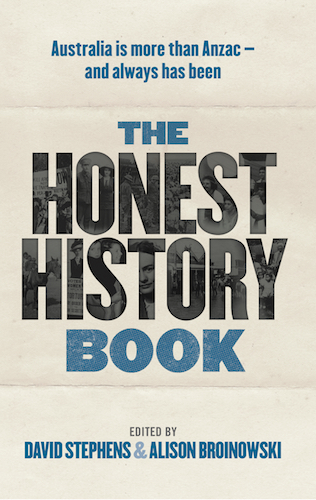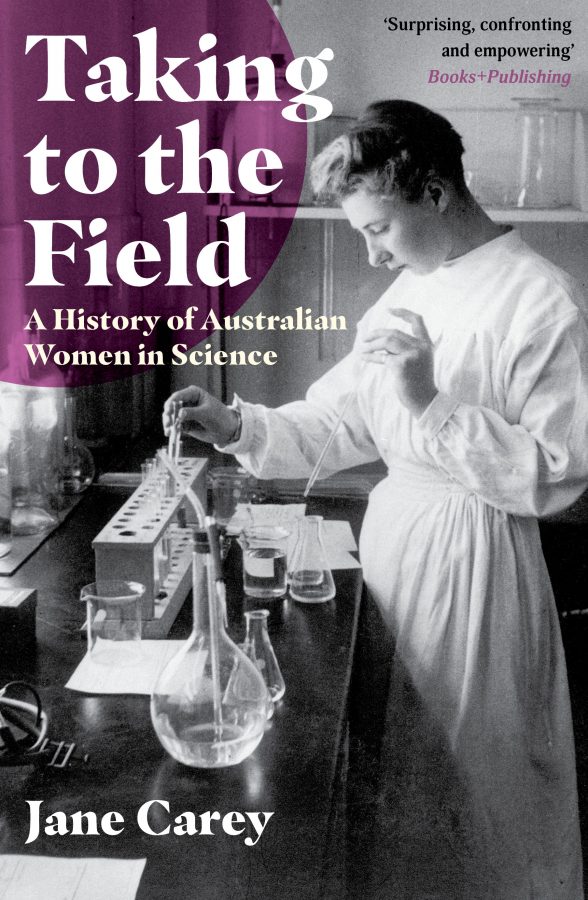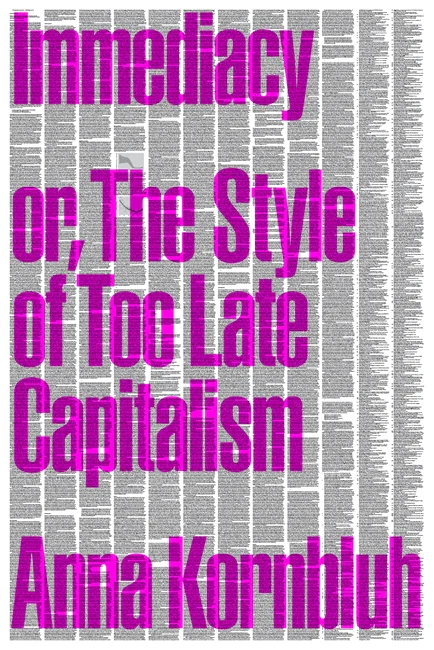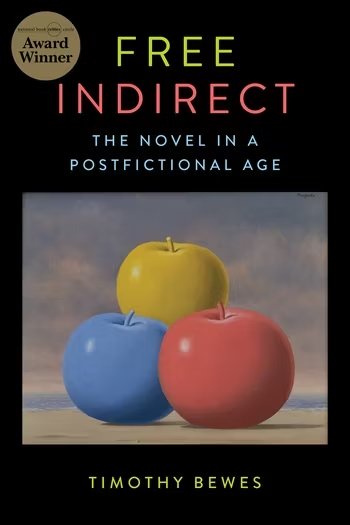On the eve of Anzac Day in 2014 local news sites swelled with stories of commemoration. I was doing research into historical consciousness and the ways Australians connect to the past, and clicked on an ABC news link about a program to mark the centenary of the first world war. Run by the Australian War Memorial (AWM), the scheme hoped to place 100,000 small wooden crosses on Australian war graves—one for every Australian killed in service—on which messages of thanks from Australian schoolchildren would be inscribed.
AWM Director Brendan Nelson told the ABC that 16,000 crosses had already been sent overseas. ‘From the students who’ve completed the crosses,’ he said, ‘the constant theme is “thank you for your sacrifice, thank you for giving your life for us and thank you for helping us to be free”.’
The AWM has a Flickr gallery of nearly one thousand of these little crosses, placed at the foot of Australian war graves far from home. ‘Thank you for protecting our country’, reads one from Jane. ‘Rest. In. Peace.’ Another, from Khushi in Waverly, is written in a fusion of SMS and commemorative English:
Thanku for saving our country
You saved our country
You saved our lives our country is beautiful.
The sentiment is genuine and heartfelt — poetic, even. But is this history? While the AWM’s aim to encourage and develop historical empathy through the act of remembrance prompts connections to Australia’s past, I am unconvinced their project reflects the complexity of historical practice more broadly, or Anzac history in particular.
Where are the miniature wooden crosses that contemplate the stench of the trenches, as troops fought beside the corpses of their friends for days on end? The lives broken and lost through mental illness and disability? The soldiers who cried ‘no more’ and ‘never again’? Where is the tension between historical empathy and judgement? The understandings of how values (including imperialism, national identity, masculinity and even ‘mateship’) change over time? Or the contested readings of the first world war, a conflict that was wracked nationally by sectarianism, conscription debates and general strikes?
As the UK historian John Tosh urges, thinking with history isn’t the same as thinking about history. Not every act of nostalgia or remembrance is an act of history-making, the late US historian Michael Kammen similarly reminds us. After all, the skills of historians are not intuitive but learnt over time: sources need to be interrogated, accounts pieced together, archives read along the grain, as well as across.
So it’s not that the ‘thank yous’ shouldn’t be said. These children’s feelings of gratitude are no doubt authentic; but expressed in isolation, without complexity, without context and shape, what they are isn’t history but glib sentimentality. And that’s the premise of The Honest History Book, a collection of essays edited by David Stephens and Alison Broinowski that interrogates the growing romanticisation of all things Anzac:
The Honest History coalition has always recognised that war is important in our history—not so much because of what Australians have done in war but because of what war has done to Australia, to Australians and to others. Our mantra has been ‘Not only Anzac but also’—the ‘also’ being shorthand for all the non-Anzac influences.
To manage the ‘not only’ and the ‘also’, Honest History is divided in two parts. The first, ‘Putting Anzac in its Place’, challenges popular renditions of the Anzac myth with chapters that explore both Australia’s military history and its commemoration. Next, ‘Australian Stories and Silences’ includes pieces that implicitly demand a bigger picture approach to Australian history—one that doesn’t prioritise the Anzac story at the expense of other narratives. Distinguished writers and historians such as Larissa Behrendt, Frank Bongiorno, Paul Daley, Joy Damousi, Carmen Lawrence, Stuart Macintyre, and Mark McKenna have each written in this collection. Along with scholars Burçin Çakir, Mark Dapin, Carolyn Holbrook, Rebecca Jones, Douglas Newton, Michael Piggott, Peter Stanley and Gwenda Tavan, they provide a powerful argument against the superficial, the commercial, and the celebratory aspects of what has come to be termed ‘Anzackery’, as well as making important interventions that demonstrate the diversity of Australian history.
For the most part, the sections work well together: they complicate the narrative of Australia’s military history beyond the Anzac story (to include, women anti-war activists, the Armenian genocide, frontier wars, imperial expansion); they also consider the histories silenced by a gargantuan Anzac obsession, retrieving other aspects of Australian history, such as Indigenous, economic and environmental histories, as well as histories of class and migration.
In her foreword, Griffith Review editor Julianne Schultz insists that ‘Interrogating the past—honestly, critically, avoiding the traps of ahistoricism and sentimentality—is essential’. This collection enacts her pleas wholeheartedly. Honest History can and should be read as part of a growing and critical contribution to Anzac historiography that includes What’s Wrong with Anzac? (edited by Marilyn Lake and Henry Reynolds), Bad Characters: Sex, Crime Mutiny, Murder and the Australian Imperial Force (by Peter Stanley), Forgotten War (by Henry Reynolds), Anzac Day: Then and Now (edited by Tom Frame), Carolyn Holbrook’s Anzac: The Unauthorised Biography, Anzac’s Long Shadow, by James Brown, and Craig Stockings’ two edited books, Zombie Myths of Australian Military History and Anzac’s Dirty Dozen.
Taken together, the works demonstrate a powerful critique of popular remembrance. They reveal the complicated relationship Australia has with its past, where its federal government spent more on commemorating the centenary of the first world war than every other participating nation put together, yet only a generation ago Anzac Day was thought to be in decline. They question why Australia remembers its sacrifices in international wars ad nauseum, but forgets its own wars of colonisation and dispossession. And they explicitly challenge the efficacy of publicly funding education programs that emphasise Australian exceptionalism without teaching critical historical engagement. ‘The Great War should rattle our souls, not rouse our self-esteem’, Newton rightly contends in his chapter.
Although the public impact of this Anzac historiography in comparison to the plethora of Anzac legacy-making is less equivocal. For every critical engagement, there are bucketloads of popular commemorative moments — like the paddle-pop stick crosses sponsored by the AWM described above, Gallipoli stubby holders, or the one minute’s silence you can order to your mobile phone for $2.25 (if you’re not able to make it to an Anzac service in person).
For every scholarly critique purchased, scanned or borrowed, Australian war histories by writers such Peter FitzSimons, Les Carlyon and Paul Ham are bought by the thousand; their books sell hundreds of thousands of copies, and they have a reach into the Australian market unimaginable by critical historians. Partly that success comes down to writing style. Academic historians are ‘so embalmed in the language of their faculties that they fail to understand how history for the public should be written’, Ham provocatively contends. ‘With a few glamorous and brilliant exceptions they tend to stick to their university departments, producing articles and essays that are almost universally unread.’ It’s no coincidence many of these successful history writers were trained as journalists, with a capacity to produce compelling narratives for a broad audience.
However, that boom in popular history has created something of a ‘crisis’ in the academy. ‘We academic historians do not know quite what to make of all this’, admits US historian David Harlan. ‘We are delighted to see so many people interested in the past, of course,’ but are concerned when these popular interpretations of the past are ‘little more than historical melodramas, long on misty nostalgia but short on critical analysis.’ Such contest is epitomised in the mixed reviews of popular military histories, such as FitzSimons’ Victory at Villers-Bretonneux, at once praised and dismissed for its riveting style. While historian Peter Stanley criticised it as a sort of ‘graphic novel without the pictures; cartoon history by the kilogram’, readers generally enjoyed its accessibility (Goodreads readers gave FitzSimons’ book a rating average of 4.32/5), and historian Ross Fitzgerald commended it on the grounds that the ‘magnificent victory at Villers-Bretonneux deserves to be remembered’.
But memory is a slippery beast, and Honest History does a good job of challenging that reification of Anzac and its effects on historical thinking. While the history of ‘Anzac should be honest and avoid euphemism,’ argues David Stephens, Anzackery—its contemporary commemorative manifestation — ‘distorts’ history ‘by overlaying it with jingoism and sentiment’. Bongiorno suggests that the myth has departed from actual history to such an extent as to become permanently inflected with national piety: ‘we could be witnessing the development of a spiritually charged, post-secular version of the old pioneer legend’.
In his chapter, Newton further argues that this world war, a global culmination of swelling nationalism and imperialism, has become superseded in Australian memory by parochialism and simplicity. ‘One hundred years later, Australians’ lack of awareness is ingrained. The “other people’s war” is almost completely eclipsed by our war’, he insists, with a deliberate emphasis on that historically problematic collective pronoun.
Although the ascendency of popular commemoration surely comes down to more than simply sentiment. It seems we are living through a near perfect storm of Anzac historical consumption, with a number of factors working in concert. First, Australian historical narratives have been deeply challenged by the emergence and power of Indigenous historical perspectives, especially since the 1970s and 1980s. Australia’s ‘origin story’, once characterised by discovery, nascent democracy and workers’ rights, has been powerfully reimagined by Indigenous writers and rights activists as a narrative of invasion and dispossession (see, for example, the work of Michele Grossman and Rachel Perkins).
The disruptive power of this challenge was brought into sharp relief during the Bicentenary in 1988, where official celebrations of Australian history were both contradicted and rattled by historical revision and protest. When Labor Prime Minister Bob Hawke agreed to officially support and attend the hugely popular seventy-fifth commemoration of the Gallipoli landing at Anzac Cove with aging veterans in 1990, Australia’s politic gratefully latched on to a much more palatable ‘national birth’, to borrow Marilyn Lake’s term.
At the same time, there has been a marked democratisation of both historical subjects and subjectivities, as well as a comparable interest in vernacular histories and vernacular history-making. The day-to-day lives of families and their communities are not only valid historical subjects, but are conducted by the communities themselves. Technology, such as the digitisation of archives and reach of the Internet, has further extended history into Australia’s local groups and living rooms. As Sam Wineburg and his colleagues have shown, today’s past — digitised, packaged, and streamed over the Internet — comes from every quarter. In other words, the Anzac revival is not simply a cynical government exercise to avoid uncomfortable historical truths. As Holbrook’s chapter argues, it reflects a popular desire to connect to the past that isn’t constrained to one side of politics. ‘It’s what the bogans want’, she relates one senior government official recently explaining.
Yet the politics of Australia’s Anzac history has muddied the waters of its memory boom. Anzac’s political capital has galvanised government investment in its commemoration: the Department of Veterans’ Affairs has extensively funded education programs focused on the ‘Anzac Story’; when he was federal Education Minister in 2005, Brendan Nelson famously insisted that a list of Australian Values, which was overlayed with an image of Simpson and his donkey, be prominently displayed in every school around the country; and in 2016, when $52.5 million was stripped from the federal arts and culture budget, the AWM was notably spared.
Unsurprisingly, the price of that politicisation of the past has often been complexity. Prime Minister Tony Abbott’s speech commemorating the centenary of the Gallipoli landing in 2015 admitted that, ‘Few of us can recall the detail, but we have imbibed what matters most: that a generation of young Australians rallied to serve our country, when our country called’. This is indeed commemoration for nation-building, as Bongiorno writes, where the even the prime minister admits historical context is superfluous to the message: ‘the federal government’s contribution to fostering collective war memory was increasingly conspicuous’.
So the need for critique is important — even more so given that critical historians have been subject to awful public attacks in recent years. This isn’t trench warfare, by any means, but it’s hardly nerf-guns in the backyard, either. Historians Marilyn Lake, Mark McKenna and Clare Wright suffered atrocious, abusive commentary from columnist Andrew Bolt following comments they made that Anzac Day had become like a commemorative carnival. Lake also recalled painful personal abuse she received following critical forays into public debate. As Stephens and Broinowski insist, ‘Questioning Anzac should not be seen as disloyal’. But all too frequently it is, it seems.
This means we need books like Honest History that delve into and uncover the ‘slipperiness’ of Atatürk’s famous words, for example, which were etched into a monument at Anzac Cove. The text urges Australian mothers: ‘wipe away your tears. Your sons are now lying in our bosom and are in peace’. But it’s likely they were at best misappropriated, at worst, invented, according to Stephens and Çakir. The desire for reconciliation and sentiment created a whole mythology around the memory of Anzac. ‘It is the right of adults touched by war to go on, if they wish, preferring myths to evidence-based history, but they should not encourage children to do the same’, the authors insist.
That malleability of memory is even more visible in Larissa Behrendt and Paul Daley’s chapters on Indigenous history. For Behrendt, the Anzac story is just one chapter of a narrative that ebbs and flows according to perspective and subjectivity. Colonisation is another: ‘From the Indigenous perspective, this was a war against an invading force. To the colonists, Indigenous people were impediments to progress’. If the 2016 ABC Vote Compass on the use of the word ‘invasion’ in school texts to describe Australia’s colonisation is any indication, Behrendt notes, Australian collective memory is deeply divided and divisive: ‘The debate has been acrimonious and polarising—black armband and white blindfold—and it leaves no room for shades of grey or competing narratives’.
Meanwhile, Mark Dapin ponders the contested commemoration of the Vietnam War in Australian history and reflects on why particular memories have gained traction and currency over others. While many Vietnam vets were celebrated on return and feted by local communities, the prevailing narrative is that they were shunned by Australians, including anti-war activists and veterans of the two world wars before them. ‘It is a puzzling truth that everybody remembers Nadine Jensen, the woman with the red paint, but no one today recalls the mother with the confetti’, Dapin writes.
These accounts of conflicting historical narratives critically reveal the potency of collective memory and national identity, but do little to explain how they emerge. For example, Dapin’s suggestion that ‘“Honest” history is a dish best served cold, by uninterested wait staff, long after the banquet of lived experience is over’ doesn’t quite account for the modulation of memory. This is not about the need for more ‘objectivity’ but an understanding of how nations and individuals construct narratives and memories that uphold their collective and individual selves.
If there’s a criticism to be made about this collection it’s that, despite its considerable length, the book lacks a sense of its place within memory studies more broadly, and its concomitant theorisations of remembering and forgetting in particular. Why do certain memories have more traction than others? Why does that change over time? And how? The fluidity of memory, the ways memory moves between the individual and the collective, and the memories that we make and absorb, as well as paper over and forget, are all vital pieces of the Anzac puzzle.
I’m reminded here of works such as Alistair Thompson’s influential book, Anzac Memories, which describes old diggers in their interviews remembering scenes from scenes from Richard Weir’s film Gallipoli as part of their own life-stories; of Maurice Halbwachs’ insistence on the complex relationship between individual and collective memory; and of Louisa Passerini’s comments about the ways people construct memories following trauma (which would surely apply both to Anzac memories and non-Indigenous remembrance of colonisation, for example).
Memory it doesn’t just happen — it’s a matter of agency. As McKenna insists, there has been a constant curation of Anzac memory, which began even before the event itself. ‘For a geographically isolated federation such as Australia, blooding in battle was the ultimate proof of the right to belong to a global British community’, he writes. ‘The script for Gallipoli was written decades before the event came to pass’.
Of course, the concomitant act of forgetting requires just as much work, and Daley’s chapter is a terrific example of the power of historical erasure in memory-making, recounting an episode of colonial violence on the North Queensland frontier from 1887, where a creek was ‘renamed not to commemorate those murdered but the very act of murdering them’. (As Anna Haebich has written, ‘Forgetting and ignorance are never benign conditions: they do things’.) Daley also points out the hypocrisy of Australian commemoration, where an estimated 65,000 Aboriginal deaths on the Queensland frontier have been obscured, deliberately and instrumentally, while the 61,000 Australian soldiers killed in the first world war are dutifully remembered. It’s this act of making memories cohere (and disappear) into something we can understand that makes the past such a powerful driver of identity.
While several chapters allude to important questions about memory and commemoration, The Honest History Book would have benefitted from a greater contextualisation in the field, including international studies of memory and historical consciousness, as well as their implications for historical analysis and research. After all, every social generation lives through the past and remembers it according to its own social concerns and values. As Holbrook asks in her chapter, ‘How can we account for the massive change in public attitudes to Anzac commemoration between my generation and that of my teenage daughter?’
Understanding how memories are created, shared across nations and generations, and edited in public, popular and educational platforms is critical here. While the Anzac boom prompted The Honest History Book and the critique it rightly presents, bigger questions about how and why Anzac has become Australia’s preeminent historical and national day still remain, as do questions about the longevity of that commemoration in the future. Where will we be on Anzac day in fifty or one hundred years? Will that myth grow in a vacuum of historical knowledge, or will ‘people recoil from its suffocating piety’ as McKenna suggests, ‘and begin to question the endless parade of speeches and media features that claim to pass for history’? Only time will tell.
Works cited
Verity Burgmann, ‘Flogging the Bicentenary’, Arena 82 (1988): 6–14.
Ross Fitzgerald, ‘Victory at Villers-Bretonneux: latest in Peter FitzSimons’s trilogy’, The Australian, 12 November 2016.
Anna Haebich, ‘Forgetting Indigenous Histories: Cases from the History of Australia’s Stolen Generations’, Journal of Social History 44, no. 4 (2011): 1033–1046.
Maurice Halbwachs, On Collective Memory Translated by Lewis A Coser (Chicago: University of Chicago Press, 1992).
Paul Ham, ‘Human Factors’, Sydney Morning Herald, 22 March 2014.
David Harlan, ‘Ken Burns and the Coming Crisis of Academic History’, Rethinking History 7, no. 2 (2003): 185.
Michele Grossman, Blacklines (Carlton: Melbourne University Press, 2003
Carolyn Holbrook, Anzac: The Unauthorised Biography (Sydney: New South, 2014).
Michael Kammen, ‘Carl Becker Redivivus: Or, Is Everyone Really a Historian?’ History and Theory 39, no. 2 (2000): 230–242.
Marilyn Lake, Henry Reynolds, Mark McKenna, and Joy Damousi eds, What’s Wrong With Anzac? The Militarisation of Australian History, (Sydney: NewSouth, 2010).
Luisa Passerini, ‘Introduction’, in Memory and Totalitarianism, edited by Luisa Passerini (New Brunswick, NJ: Transaction Publishers, 2009).
Peter Spearitt, ‘Celebration of a Nation: The Triumph of Spectacle’, Australian Historical Studies 23, no. 91 (1988): 3-20.
Peter Stanley, ‘Three Great War histories review: Was the slaughtering really worth it?’ Sydney Morning Herald, 12 November 2016.
Alistair Thomson, Anzac Memories: Living with the Legend (Melbourne: Oxford University Press, 1994).
John Tosh, Why History Matters (Bassingstoke: Palgrave Macmillan, 2008).
Sam Wineburg, Susan Mosburg, Dan Porat, and Ariel Duncan, ‘Common Belief and the Cultural Curriculum: An Intergenerational Study of Historical Consciousness’, American Educational Research Journal 44, no. 1 (2007): 44.







